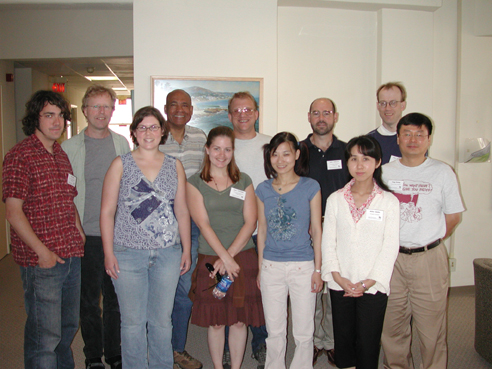NCEAS Working Groups
Ecological stoichiometry and the spatial distributions and temporal dynamics of arthropods
Project Description
Stoichiometry, the study of the balance of multiple elements in living systems, is increasingly recognized as an integrative axis within ecology and across biological disciplines. We seek to characterize a series of little-explored links between stoichiometry and the spatial distributions and temporal dynamics of arthropods. These issues lie at the interface of macroecology and macrophysiology. We focus on four arthropod groups where different stoichiometric mechanisms likely help determine species-level spatial distributions and/or temporal dynamics. These include three taxonomically defined groups (the Orthoptera [grasshoppers and crickets], the Lepidoptera [butterflies and moths], and the Hymenoptera [ants and bees]) plus one ecologically defined group (troglobites [obligate cave dwellers]). Mechanisms link an arthropod's stoichiometry with its capacities for growth, reproduction, and dispersal. We use these linkages as springboards for testing three hypotheses. First, focusing on orthopterans and lepidopterans, we will characterize how a species' stoichiometry is linked to its tendency to exhibit "outbreak" dynamics and what elements are most important. Second, focusing on hymenopterans and troglobites, we will test how an arthropod's stoichiometric content relates to the breadth of habitats it exploits. Lastly, focusing on orthopterans, hymenopterans, lepidopterans and other arthropods, we will test whether these same stoichiometric mechanisms imply that the elemental content of some species will predispose them to respond to global change via shifts in their geographic ranges. We will address these three issues by characterizing the "intersections" of several ecological databases. Our work will be primarily from an empirical, ecoinformatic perspective; however, we will complement these efforts with theoretical modeling of insect outbreak dynamics in stoichiometrically explicit population models.

Principal Investigator(s)
Diane W. Davidson, William F. Fagan
Project Dates
Start: May 9, 2006
End: February 16, 2007
completed
Participants
- Pedro Barbosa
- University of Maryland, College Park
- Steven Cook
- University of Utah
- Diane W. Davidson
- University of Utah
- Keith Eshleman
- University of Maryland Center for Environmental Science
- William F. Fagan
- University of Maryland, College Park
- Peter Hambäck
- Stockholm University
- Yun Kang
- Arizona State University
- Yang Kuang
- Arizona State University
- Andrew M. Liebhold
- USDA Forest Service
- Eric Lind
- University of Maryland, College Park
- Holly M. Martinson
- University of Maryland, College Park
- Terrence McGlynn
- University of San Diego
- Todd M. Palmer
- University of Florida
- Akiko Satake
- Princeton University
- Katie Schneider
- University of Maryland, College Park
- Hao Wang
- Arizona State University
Products
-
Journal Article / 2007
Population and community consequences of spatial subsidies derived from central-place foraging
-
Data Set / 2008
Detritivory: stoichiometry of a neglected trophic level data
-
Data Set / 2008
Ecological stoichiometry and the spatial distributions and temporal dynamics of arthropods
-
Journal Article / 2009
Effects of body size, trophic mode and larval habitat on Diptera stoichiometry: A regional comparison
-
Journal Article / 2008
Detritivory: Stoichiometry of a neglected trophic level
